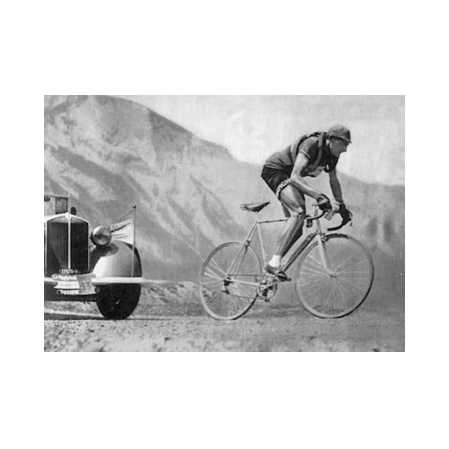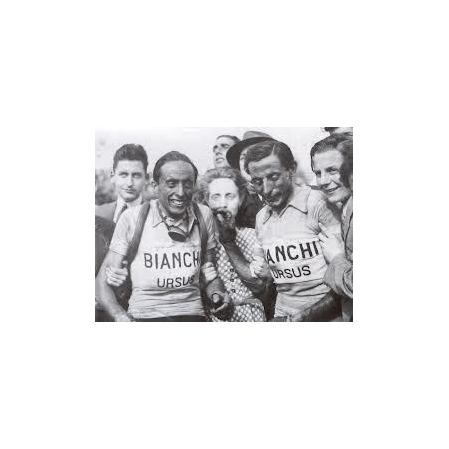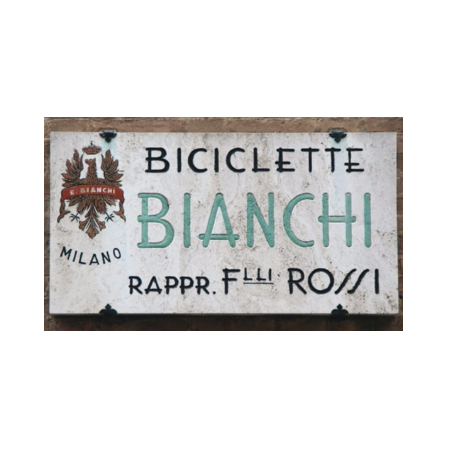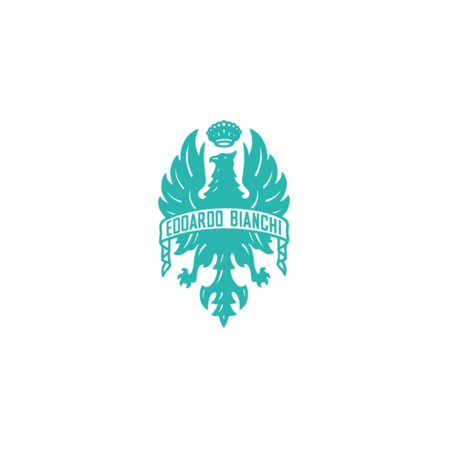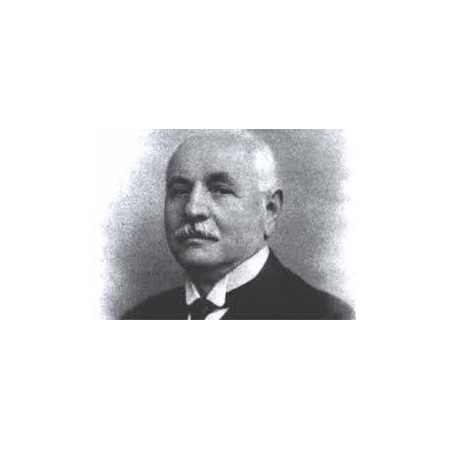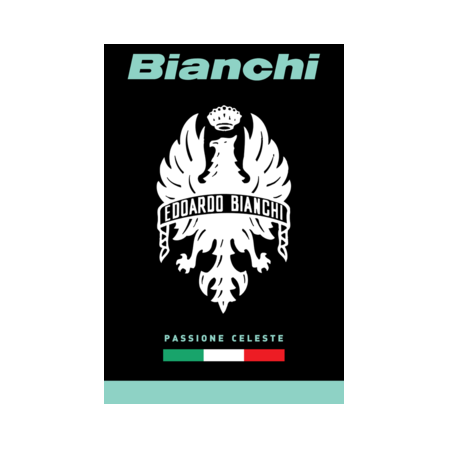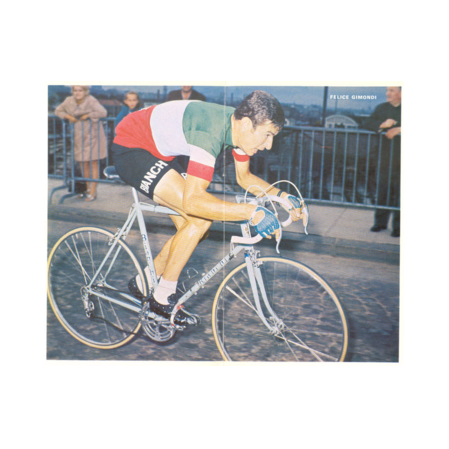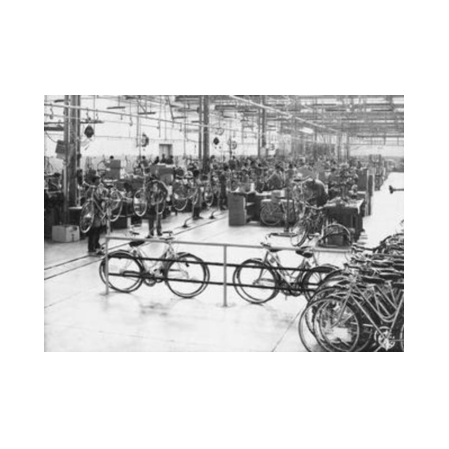Bianchi
Storia di Edoardo Bianchi

La più antica (e più importante) casa italiana per la produzione di biciclette nasce nel 1885 a Milano, come officina meccanica posta al n. 7 di via Nirone, a Milano. E' fondata da Edoardo Bianchi, allora solo ventenne Edoardo (1865-1946) era stato orfano di padre e per questo accolto all'età di quattro anni dai Martinitti, un istituto milanese dove ebbe la possibilità di ricevere un'istruzione nel campo della meccanica. Si sdebiterà destinando a questo istituto, sino al termine della sua vita, una percentuale dei profitti della sua azienda. All'inizio, la Bianchi non produce solo biciclette ma anche altri articoli di meccanica: cuscinetti a sfera, strumenti chirurgici, campanelli elettrici e altro. Nei primi tempi, realizza velocipedi tradizionali. Rapidamente, si orienta però sul modello di bici destinato ad avere maggiore successo: ruote della stessa dimensione e telaio in acciaio. Nel 1888 applica l'idea di John Dunlop: la gomma con camera d'aria. In questo periodo è chiamato da Casa Savoia ad insegnare l'uso della bicicletta ai Reali e in particolare alla Regina Margherita; speciali modelli Bianchi, assieme a bici inglesi, percorrono così i viali del parco della Villa Reale di Monza. La Bianchi nel 1895 diventa “Fornitore della Real Casa” e può utilizzare sui propri prodotti lo stemma rosso-crociato dei Savoia. Già a cavallo dell’ ottocento-novecento ottiene numerosi riconoscimenti in esposizioni nazionali e internazionali (Milano, Parigi, Bologna e Roma).
Sin dai primi anni la Bianchi riconosce l'importanza delle competizioni ciclistiche, creando il Reparto Corse. Nel 1899 con Giovanni Fernando Tomaselli, che prima correva con una Prinetti e Stucchi, la Bianchi vince il Gran Prix di Parigi su pista e nel 1911 con Carlo Galetti la terza edizione del Giro d'Italia.
Nel 1905 diventa società per azioni e nel 1913 appare sui telai il colore tipico delle Bianchi: il classico "azzurro Bianchi" Questo colore, però, diventerà caratteristico delle biciclette Bianchi solo dal 1940.
Nel 1946 muore, dopo un incidente stradale, Edoardo Bianchi. Come presidente della Bianchi S.p.A. subentra il figlio, Giuseppe Bianchi. Nel secondo dopoguerra, il nome della Bianchi si lega indissolubilmente a quello di Fausto Coppi e alle sue numerose vittorie (tra l'altro, due Tour e cinque Giri). Hanno corso per e con la Bianchi molti campioni. Tra questi: G. Tomaselli, C. Galetti, T. Belloni, G. Gerbi, E. Pavesi, Petit-Breton, H. Pélissier, O. Bottecchia, C. Girardengo, G. Olmo (record dell’ora 1935), A. Bovet, F. Coppi (mondiale a Lugano nel 1953), R. Riviere (record dell’ora nel 1957,) N. Defilippis, Felice Gimondi (mondiale a Barcellona nel 1973), V. Adorni, M. Argentin (mondiale a Colorado Springs nel 1986) e Marco Pantani vincitore del Giro d’Italia e Tour de France nel 1998.

The oldest (and most important) Italian house for the production of bicycles was born in 1885 in Milan, as a mechanical workshop located at no. 7 in via Nirone, in Milan. It was founded by Edoardo Bianchi, then only twenty years old Edoardo (1865-1946) had been an orphan of a father and therefore welcomed at the age of four by the Martinitti, a Milanese institution where he had the opportunity to receive an education in the field of mechanics . You will pay back by allocating a percentage of your company's profits to this institution until the end of its life. In the beginning, Bianchi produced not only bicycles but also other mechanical items: ball bearings, surgical instruments, electric bells and more. In the early days, he made traditional velocipedes. Quickly, however, he oriented himself on the bike model destined to be more successful: wheels of the same size and steel frame. In 1888 he applied the idea of John Dunlop: the rubber with an inner tube. In this period he was called by Casa Savoia to teach the use of the bicycle to the Royals and in particular to Queen Margherita; special Bianchi models, together with English bikes, thus travel the paths of the park of the Villa Reale in Monza. In 1895 Bianchi became "Supplier of the Real House" and could use the Savoy red-crusader coat of arms on its products. Already at the turn of the nineteenth and twentieth centuries he obtained numerous awards in national and international exhibitions (Milan, Paris, Bologna and Rome).
Since the early years Bianchi has recognized the importance of cycling competitions, creating the Racing Department. In 1899 with Giovanni Fernando Tomaselli, who previously ran with a Prinetti and Stucchi, Bianchi won the Paris Grand Prix on the track and in 1911 with Carlo Galetti the third edition of the Giro d'Italia. In 1905 it became a joint stock company and in 1913 the typical color of the Bianchi appeared on the frames: the classic "Bianchi blue" This color, however, would become characteristic of Bianchi bicycles only from 1940. In 1946 Edoardo Bianchi died after a car accident. As president of Bianchi S.p.A. his son Giuseppe Bianchi takes over. After the Second World War, Bianchi's name is inextricably linked to that of Fausto Coppi and his numerous victories (among other things, two tours and five laps). Many champions have raced for and with Bianchi. Among them: G. Tomaselli, C. Galetti, T. Belloni, G. Gerbi, E. Pavesi, Petit-Breton, H. Pélissier, O. Bottecchia, C. Girardengo, G. Olmo (hour record 1935), A. Bovet, F. Coppi (world in Lugano in 1953), R. Riviere (hour record in 1957,) N. Defilippis, Felice Gimondi (world in Barcelona in 1973), V. Adorni, M. Argentin (world Colorado Springs in 1986) and Marco Pantani winner of the Giro d'Italia and Tour de France in 1998.






